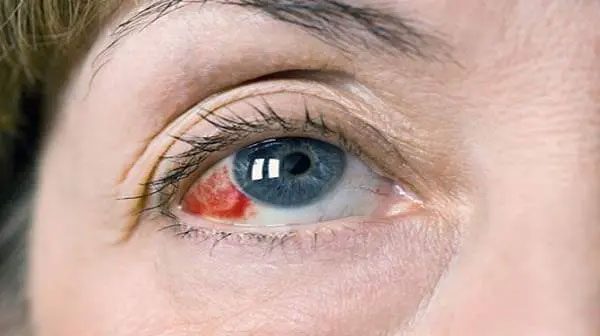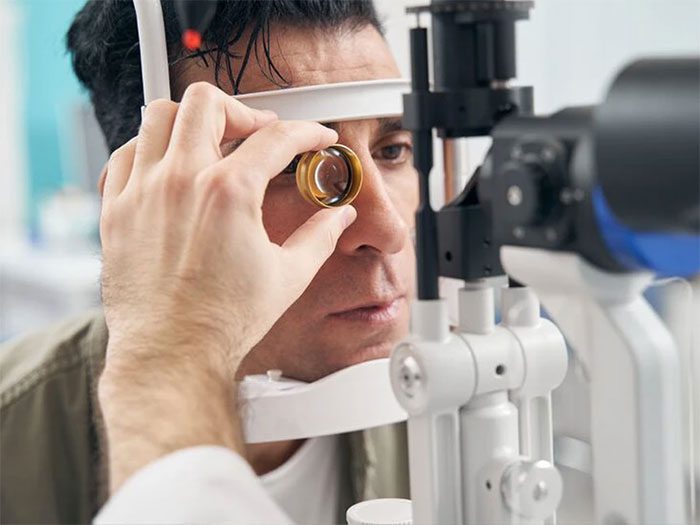Everyone is familiar with stroke, a dangerous condition that can lead to severe complications and a high risk of death. However, eye stroke is a term that may be unfamiliar to many. The estimated number of people who experience eye strokes is about 1 to 2 per 100,000 individuals each year.
What You Need to Know About Eye Stroke
So, what is an eye stroke? How dangerous is this condition? Can it be prevented?
1. What is an Eye Stroke?
Eye stroke is also known as retinal artery occlusion, a condition that occurs when the veins or arteries of the retina get blocked due to a blood clot or narrowed blood vessels, leading to loss of vision.
There are several types of eye strokes, depending on the affected blood vessels:
- Central Retinal Vein Occlusion (CRVO): The main vein of the retina is blocked.
- Central Retinal Artery Occlusion (CRAO): The central artery of the retina is blocked.
- Branch Retinal Vein Occlusion (BRVO): Smaller veins of the retina are blocked.
- Branch Retinal Artery Occlusion (BRAO): Smaller arteries of the retina are blocked.
The exact cause of eye stroke is not always clear, but certain health conditions, such as high blood pressure and diabetes, can increase the risk of this condition.

Eye stroke occurs when the veins or arteries of the retina are blocked due to a blood clot or narrowed blood vessels, leading to sudden vision loss. (Image: Internet).
2. Signs of Eye Stroke
Eye strokes often occur with little warning of impending vision loss. Most people who experience an eye stroke notice loss of vision in one eye upon waking in the morning or a gradual decline in vision over several hours or days. Pain is rarely a symptom.
According to Medical News Today, symptoms of an eye stroke include:
- Complete or partial vision loss. Vision changes may start small but worsen over time.
- Inability to see from the side of the eye.
- Blurred or distorted vision.
- Seeing dark areas (blind spots) in the upper or lower part of the visual field.
3. Who is at Risk for Eye Stroke?
Anyone can experience an eye stroke, but certain factors may increase the risk, such as:
- Middle-aged and older individuals.
- People with diabetes.
- People with glaucoma.
- Individuals with conditions affecting blood flow, such as high blood pressure and high cholesterol.
- Those with other cardiovascular diseases.
- Narrowing of the carotid artery or cervical artery.
- Individuals with rare blood disorders.
- Smoking increases the risk of all types of strokes.

Older individuals are more likely to experience eye strokes. (Image: Internet).
4. What Complications Does Eye Stroke Cause?
Eye strokes can lead to various serious complications. However, complications are often seen in individuals who let the condition progress over time without timely intervention and treatment.
- Macular Edema: The macula is the central part of the retina that enhances vision. Macular edema is the accumulation of fluid in the macula, leading to swelling and thickening, which distorts vision.
- Neovascularization in the Eye: This condition involves the abnormal growth of new blood vessels in the retina, which can leak into the vitreous humor and cause vision loss. In severe cases, the retina may completely detach.
- Glaucomatous Optic Neuropathy: Increased pressure in the eye due to the formation of new blood vessels.
- Blindness.
5. How is Eye Stroke Diagnosed?
You cannot rely solely on clinical symptoms to diagnose this condition; symptoms may only indicate that there is an issue with your eye health.
To diagnose an eye stroke, it is essential to visit a hospital for examination. Doctors will begin by dilating your pupils to conduct a physical examination. They will use an ophthalmoscope to examine the interior of your eye in detail.
Additionally, several tests may be ordered, such as:
- Optical Coherence Tomography (OCT): An imaging test that can detect retinal swelling.
- Fluorescein Angiography: For this test, a dye will be injected into your arm to highlight the blood vessels in the eye.
Since eye problems may arise from pre-existing conditions, you may also be tested for glaucoma, high blood pressure, and diabetes. Your cardiovascular health may also need to be assessed. If you have been diagnosed with any of these conditions, it may affect your treatment for eye stroke.

To diagnose an eye stroke, patients need to go to the hospital for examination. (Image: Internet).
6. Treatment for Eye Stroke
Treatment will depend on the extent of damage caused by the eye stroke. Treatment options may include:
- Massaging the eye area to open the retina.
- Using medications to dissolve blood clots.
- Using anti-vascular endothelial growth factor medications, injected directly into the eye.
- Corticosteroids may also be injected into the eye.
- Pan-retinal photocoagulation therapy if new blood vessels develop after an eye stroke.
- Laser treatment.
However, each person has different health conditions. Therefore, everyone needs to strictly follow the treatment instructions from their doctor. The earlier the treatment begins, the higher the chance of regaining vision, so individuals should seek medical attention promptly when experiencing any suspicious symptoms.
7. How to Prevent Eye Stroke
While eye strokes cannot be completely prevented, certain measures can minimize the risk, such as:
- Individuals with diabetes should maintain a healthy diet and lifestyle to control blood sugar levels within recommended ranges.
- Treat high blood pressure if you have it. Glaucoma increases pressure in the eye, which raises the risk of eye stroke.
- Monitor blood pressure, as high blood pressure increases the risk of all types of strokes.
- Check cholesterol levels; if cholesterol is high, you should adjust your diet and lifestyle.
- Avoid smoking.
- Adopt a healthy diet and exercise regularly.
- Have regular eye check-ups every six months.
The information above provides insight into the condition of eye stroke. It is worth noting that experiencing an eye stroke may indicate that you are also at risk for a brain stroke. Many risk factors overlap for both conditions. Therefore, you should talk to your doctor to see if you are at risk for strokes and discuss ways to protect your health.


















































